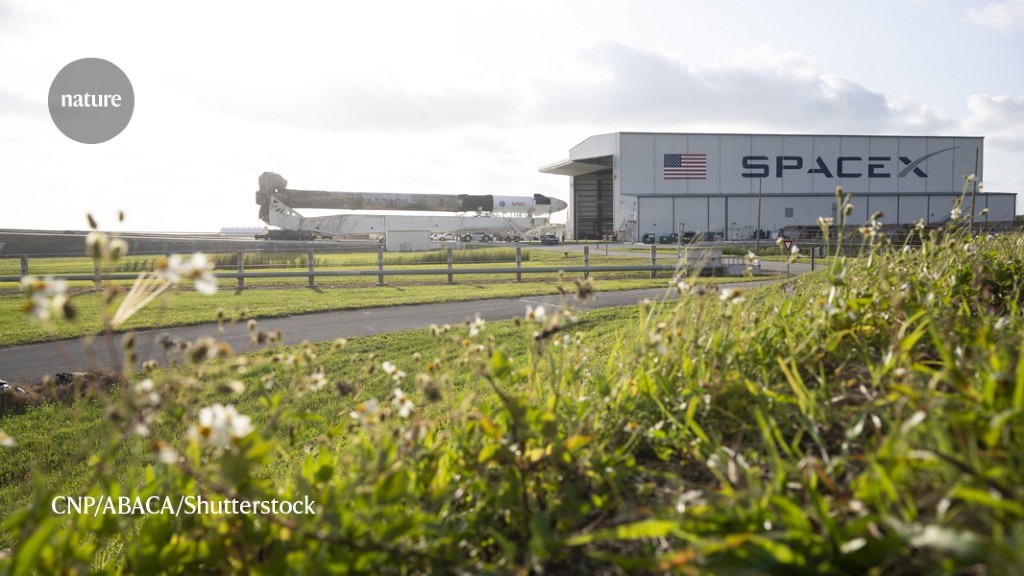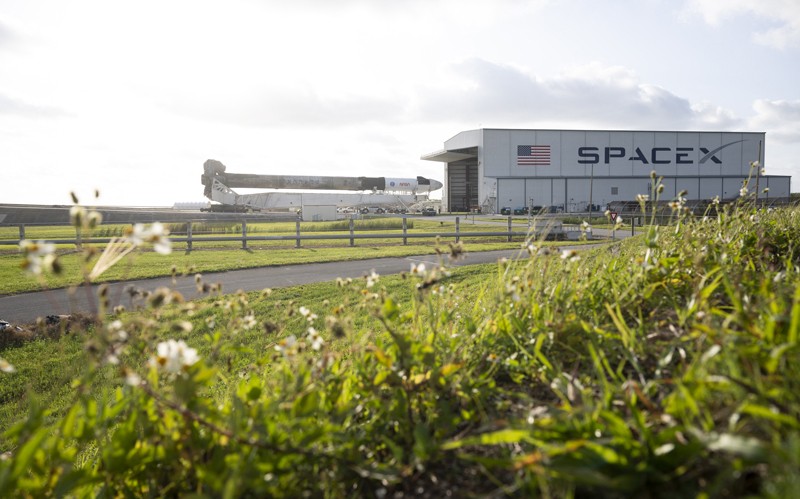South Korea’s first lunar mission blasted off from Cape Canaveral in Florida at 7.08 p.m. local time today, and is now on its way to the Moon. The successful launch of Danuri, officially known as the Korea Pathfinder Lunar Orbiter, takes the country beyond Earth’s orbit for the first time.
The launch was “spectacular”, says Mark Robinson, a planetary scientist at Arizona State University in Tempe, who is the principal investigator for one of Danuri’s instruments, called ShadowCam.
Danuri should arrive at its destination around mid-December. Its trajectory means it will take longer than most past missions to the Moon, which typically arrived in days, but will require minimal fuel.
About an hour after lift-off, the spacecraft detached from the Falcon 9 rocket on which it launched. The Korea Aerospace Research Institute’s control centre in Daejeon then took command and made contact with the spacecraft.
“They have passed through some of the most significant gates,” says Ian Garrick-Bethell, a planetary scientist at the University of California, Santa Cruz, who watched Danuri launch at Cape Canaveral. “I’m excited for the final challenge of lunar orbit insertion in December,” he says.
The control centre’s staff will now begin checking the operation of Danuri’s five scientific instruments: a γ-ray spectrometer (KGRS), a magnetometer (KMAG), a high-resolution camera (LUTI), the highly sensitive visible-light camera (ShadowCam) provided by NASA, and two identical cameras that measure the polarization of light as it reflects off the Moon’s surface (PolCam).
While Danuri cruises to the Moon, KGRS will look for any spontaneous γ-ray bursts produced by massive dying stars; KMAG will track the magnetic field between Earth and the Moon; and LUTI will send some cool shots back home.
“I can’t wait for them to start collecting science data,” says Rachel Klima, a planetary geologist at the Johns Hopkins University Applied Physics Laboratory in Laurel, Maryland, who is part of the science team. “I’m thrilled to be able to join them on this mission as we work to better understand the resources available on the Moon, as well as uncovering new details about how the Moon itself evolved,” she says.
Scientific endeavours
The bulk of the mission’s scientific observations will take place once Danuri reaches the Moon, which it will orbit for a year at 100 kilometres above the lunar surface. KGRS has a broader energy range than previous γ-ray detectors sent to the Moon, and scientists hope that it will create the clearest maps yet of the distribution of elements including iron, titanium, uranium and thorium.
Kyeong-ja Kim, a planetary geoscientist at the Korea Institute of Geoscience and Mineral Resources in Daejeon and principal investigator for the instrument, says the spectrometer is also sensitive enough to detect hydrogen, which can be used to infer the presence of water on the surface, and create a water-resource map of the entire Moon. Previous probes have struggled to map the presence of water beyond the poles, where it is relatively more abundant, she says.
KMAG will take precise measurements of the magnetic field on the surface. It will also study electric currents induced by the magnetic field of the solar wind, which streams out into space from the Sun, says Garrick-Bethell, who is part of the instrument’s science team. Studying how these currents pass through the Moon could reveal what the Moon is made of deep inside. To do this, Danuri will make use of simultaneous measurements by two NASA probes currently circling the Moon, says Garrick-Bethell. This “will make a beautiful experiment that was only briefly attempted in the Apollo era, but not over the entire Moon”, he says.
Scientists hope that today’s launch will pave the way for South Korean missions to land on the Moon and visit near-Earth asteroids.
Danuri is the first in a long line of spacecraft expected to head to the Moon over the next year, including India’s Chandrayaan-3, which will send a lander and rover to the Moon’s surface, and the first mission in NASA’s Artemis programme, which will take an uncrewed flight around the Moon in preparation for landing people there in 2025.








More News
Author Correction: Stepwise activation of a metabotropic glutamate receptor – Nature
Changing rainforest to plantations shifts tropical food webs
Streamlined skull helps foxes take a nosedive